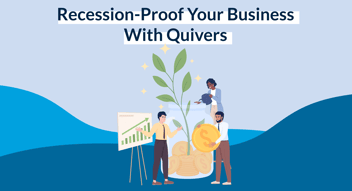CEO Corner: Retailers Are Buying Less Because You’re Giving Them No Reason to Buy More
.png?width=1280&height=720&name=CEO%20Corner%20Retailers%20Buying%20(3).png)
There’s a quiet panic spreading through boardrooms and Zoom calls across the industry. You’ve heard it. Maybe you’ve said it.
“Our wholesale orders are down.”
“Retailers are being cautious.”
“Nobody’s taking inventory risk anymore.”
And they’re not wrong. In May 2025, the NRF reported that many retailers are pausing or canceling orders amid demand uncertainty. U.S. wholesalers’ inventory-to-sales ratio has dropped to 1.30, showing retailers are letting stock run down rather than replenishing it.
The common response? Blame. Blame the economy. Blame cautious retailers. Blame the weather, TikTok trends, or the alignment of Mars and Jupiter.
But here’s the inconvenient truth: Retailers are buying less because we’re giving them no reason to buy more.
A Tale of Two Buy-ins
Imagine you’re a retailer sitting across from a brand’s sales rep, line sheet in hand. What are you really being asked to do?
You’re being asked to take a risk.
A risk that the product will move.
A risk that the consumer demand will be there.
A risk that you, the retailer, won’t be left holding the clearance bag three months later.
Yet for many brands, that’s where the conversation ends. The rep presents the line, maybe throws in a co-op ad or a seasonal poster, then expects the retailer to commit blindly to boxes of inventory.
Meanwhile, consumer behavior is shifting faster than ever. Inventory is capital. And shelf space? It’s no longer guaranteed real estate—it’s prime property that needs to earn its keep.
Is it any wonder that buy-in is shrinking?
Retailers Don’t Want Products. They Want Proof.
Retailers aren’t just looking for more SKUs. They’re looking for more signals. Signals that a product will sell, that consumer demand exists, that their risk is justified.
Without signals, buying becomes guesswork. And in this environment, guesswork is expensive.
Here’s what I rarely hear at industry events, but what every retailer is silently thinking:
“Why should I take the risk when the brand has all the data, all the direct sales, and I’m left flying blind?”
They’re right to ask. Brands sit on mountains of data—sell-through rates, consumer demand patterns, ecommerce conversion metrics. But too often, those insights stay locked inside HQ dashboards, treated as proprietary secrets rather than partnership tools.
If you’re hoarding insights, you’re hoarding growth.
Trust Is Earned, Not Assumed
We keep talking about “partnerships” with retailers, but what does that partnership really look like?
If partnership only flows one way (brands pushing product down the supply chain) it’s not partnership. It’s distribution.
True partnership looks like shared insights. Shared wins. Shared demand generation.
It looks like brands equipping their retailers not just with inventory, but with reasons to believe in that inventory.
Imagine walking into a buying meeting and saying:
“Here’s how your local consumers are already searching for this product online.”
“Here’s what we’ve sold within 10 miles of your store in the last quarter.”
“Here’s the social content driving demand in your zip code.”
Suddenly, you’re not asking them to take a risk. You’re showing them a path to revenue.
Suddenly, buying more becomes logical, not just loyal.
The Future Belongs to the Brands That De-Risk the Buy
We’re living in an age where data is the new discount. The brands winning retail floor space tomorrow will be the ones who equip their retailers today with the tools to de-risk their purchasing decisions.
Not with deeper discounts. Not with more POP materials. But with real-time visibility. Sell-through insights. Localized demand signals.
Because when retailers see what’s selling—when they see demand tied to their geography, their store, their community—they buy differently. They stock differently. They advocate differently.
They buy more. And they keep buying.
The Bottom Line
Retailers aren’t buying less because they’re lazy. Or stubborn. Or scared.
They’re buying less because we haven’t given them a compelling reason to bet bigger on our products.
It’s time to stop lamenting cautious buyers and start empowering confident ones.
Because the brands who treat their retailers like true partners—not just sales outlets—will be the brands who own the next era of wholesale growth.
And yes—this is exactly why, at Quivers, we’ve built tools to do just that. But that’s a conversation for another day.
For now, ask yourself: What reason are you giving your retailers to believe in you?



